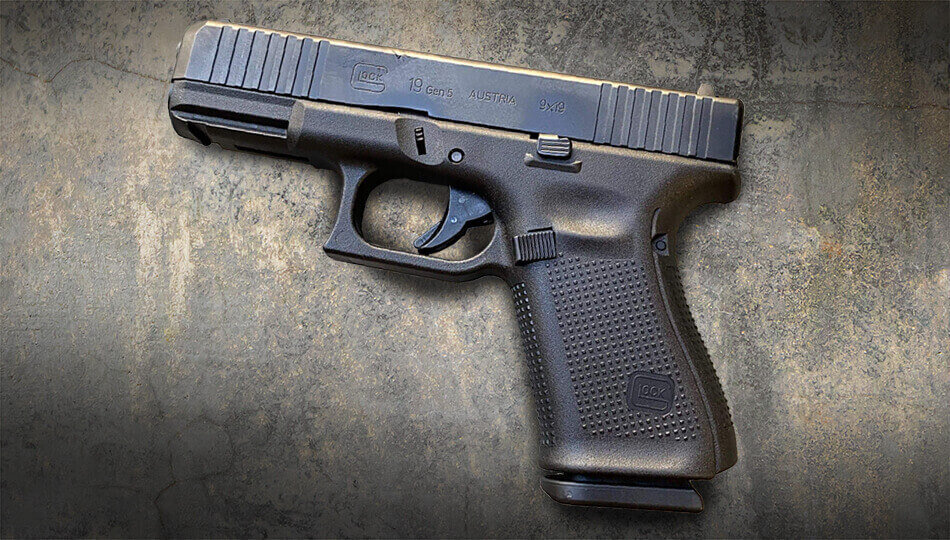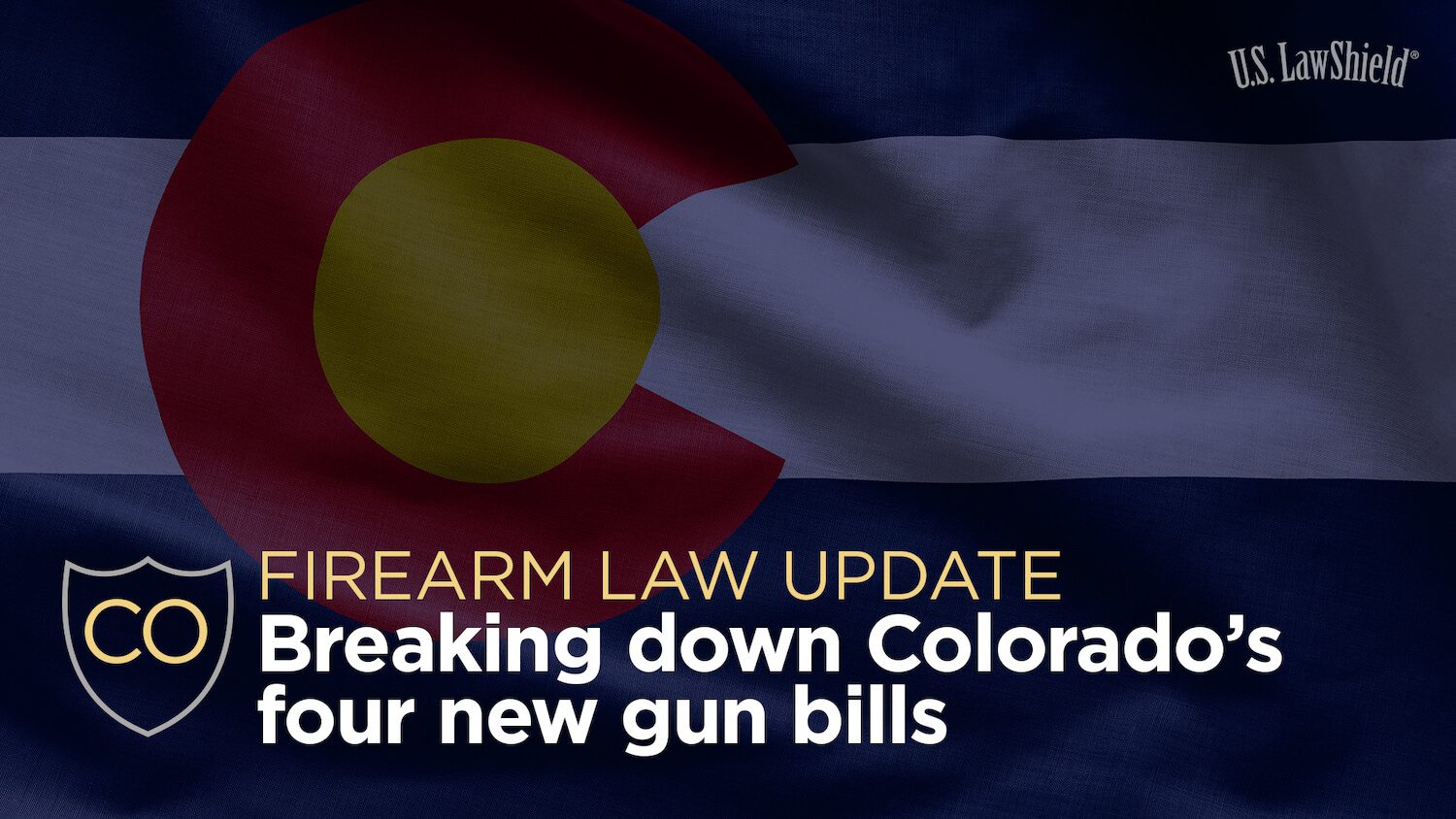
The Glock 19 may not have been the first polymer pistol designed by Glock, but it’s certainly one of the most popular. In fact, in 2020, the Glock 19 was the top seller for some online FFL (Federal Firearms License) holders. What is it about the compact pistol that makes it so popular among gun owners from all walks of life? If you’re curious—or considering picking one up for yourself—you’ve come to the right place.
Glock History
First, let’s take a look at the history of Glocks in general. Glock can trace its roots back to 1963, but the company didn’t get into firearms design and manufacture until the 1980s. Up until then, they’d been in the business of making injection-molded parts for various purposes. Glock—known at that time as Glock Ges.m.b.H.—edged into the world of weapons by taking on some projects for the Austrian military in the 1970s. Those first products included grenade casings, knives, and machine gun belt links, which basically kept them in their injection-molded lane. But in 1980, the Austrian military decided they wanted to change things up for their duty weapons. That’s when Glock took their step into the firearms world.
The military expectations and trials for a new pistol were as lengthy and in-depth as one would expect. A list of 17 requirements put together by the Federal Ministry of Defense of Austria included features like the new gun being semi-automatic, drop safe, and chambered in 9x19mm Parabellum. It was also hoped that the gun would be relatively cost-effective and not overly complex, and those goals were achieved with Glock’s polymer frame and average of 35 parts per pistol. In 1982, the Glock 17 won those pistol trials and became the standard issue weapon for the Austrian military under the name P80 (Pistole 80). This is relevant because that first pistol produced by the company is essentially the big brother of the Glock 19.
In 1986, the gun maker decided to open headquarters in the United States. They chose Smyrna, Georgia, where they’ve remained to this day.
Glock 19 History
The Glock 19 was introduced in 1988. It’s the compact version of the full-sized Glock 17 and, like the vast majority of the company’s polymer pistols, retains the same general features. Like the Glock 17, it’s chambered in 9x19mm Parabellum, with a double-stack magazine. Most of the company’s pistols have double-stacks; single-stack modelsdesigned for greater concealability hit the market in 2011 with the 45 ACP Glock 36 but didn’t really enter popular production until 2014 with the launch of the Glock 42, which was chambered in 380 ACP.
The Glock 19 has the polymer frame the company is known for as well as a steel insert within the frame. Its slide is machined from stainless steel, the barrel is hammer forged, and it has a standard capacity of 15 +1. The gun has the factory safety blade trigger found on all firearms from the company and, of course, the internal safeties they’re so well known for. There are currently four generations of the Glock 19.
Enjoying this content? Find out how you can get more sent straight to your inbox.
Does the Glock 19 Have a Safety?
Although Glocks aren’t designed with external thumb safeties, they are made with a number of internal safety features. The gun maker refers to their trio of major safety features as the SAFE ACTION® System. According to the manufacturer, this system continues to perform in temperatures ranging from -40 degrees to 122 degrees Fahrenheit.
Trigger safety: The trigger safety is the first safety in the firing sequence. It’s incorporated into the trigger in the form of a lever and when it is engaged blocks the trigger from moving rearward. To fire the pistol, the trigger safety and the trigger itself must be deliberately depressed at the same time. If the trigger safety is not depressed, the trigger will not move rearwards and allow the pistol to fire. The trigger safety is designed to prevent the pistol from firing if it’s dropped or if the trigger is subjected to any pressure that isn’t a direct firing pull. Warning: If the trigger is in the forward position the pistol may be loaded.
Firing pin safety: The second safety, the firing pin safety, mechanically blocks the firing pin from moving forward in the ready-to-fire condition. As the trigger is pulled rearward, the trigger bar pushes the firing pin safety up and frees the firing pin channel. If you decide not to fire and release the trigger, the firing pin safety automatically reengages.
Drop safety: The final safety involves the trigger bar, which rests on the safety ramp within the trigger mechanism housing. The trigger bar engages the rear portion of the firing pin and prevents the firing pinfrom moving forward. As the trigger is pulled rearward the trigger bar lowers down the safety ramp and allows the release of the firing pin. After firing, the trigger bar moves upward and reengages the firing pin. As the trigger is released, all safeties automatically reengage.
Glock 19 vs. Glock 17
At its simplest, the Glock 19 is the compact version of the full-sized Glock 17. For example, the smaller gun has a 4.02-inch barrel rather than the full-sized 4.49-inch barrel. Overall size varies, too; the larger gun has a length of 8.03 inches while the smaller gun’s length is 7.36 inches. These differences make the compact model a better option for concealed carry for the simple reason that its reduced dimensions make it easier to conceal.
Glock 19 Accessories
There are numerous aftermarket options available to customize Glocks. One of the reasons these polymer pistols are so popular is they’re incredibly customizable. Gun owners can swap out everything from triggers to sights, change the color of the gun, add grip sleeves, and even do their own stippling. Accessories are widely available from countless companies.
Glock 19 FAQ’s
Your Protection Starts Here!
The information provided in this publication is intended to provide general information to individuals and is not legal advice. The information included in this publication may not be quoted or referred to in any other publication without the prior written consent of U.S. LawShield, to be given or withheld at our discretion. The information is not a substitute for, and does not replace the advice or representation of a licensed attorney. We strive to ensure the information included in this publication is accurate and current, however, no claim is made to the accuracy of the information and we are not responsible for any consequences that may result from the use of information in this publication. The use of this publication does not create an attorney-client relationship between U.S. LawShield, any independent program attorney, and any individual.




Leave A Comment